|
On the morning of October 17th, I noticed that Tesla’s Enhanced Summon feature was active on my Tesla app. I gave it a try later that same day, and it worked! I tested it two more times that day, and it worked each time. (Although it did disconnect from my phone on one occasion, in which case the car stopped in its tracks until I re-established the connection, and that only took a few seconds.) I live in Ontario, Canada, so this must mean that Transport Canada has approved Tesla's Enhanced Summon feature for the entire country. They didn't do this right away. When the highly-anticipated Version 10 update started to roll out in Canada at the end of September, the Enhanced Summon feature was conspicuously absent.
Enhanced Summon now being available in Ontario does not necessarily mean that it’s available in every province, as provincial Ministries of Transportation would also have to approve this feature for use in each respective province. Ontario was in fact the first jurisdiction in Canada to allow on-road testing of automated vehicles. This originally occurred back in 2016, when a 10-year pilot project launched. Initially, this program was restricted to specified corporate and institutional participants who wished to test their automated vehicles in Ontario. These participants included the likes of BlackBerry's QNX, Magna, Uber, and the University of Waterloo. However, Ontario’s automated vehicle pilot program was expanded in January of 2019 to allow members of the public who own cars capable of self-driving to use those cars on Ontario roadways, but only under strict conditions. Those conditions include having either a passenger in the vehicle or a remote operator monitoring the vehicle. Members of the public will be able to drive “Level 3” conditionally automated vehicles, but the driver must be ready to take control of the vehicle at all times. (Learn more about Ontario's Automated Vehicle Program from the Ministry of Transportation.) We do indeed live in exciting times. Not only because of the improvements to safety, efficiency, and productivity that advances in technology portend, but because the world is clearly waking up to the need to leverage technology, ingenuity, and creativity to address the biggest crisis the world has ever known: climate change. Let's not forget, Tesla's mission is to "to accelerate the advent of sustainable transport by bringing compelling mass market electric cars to market as soon as possible." I would say they do this in spades. In fact, I would go further to say that the world has rarely been witness to a company that so determinedly pursues and achieves its mission on a daily basis. What else can I say? Thank you, Tesla.
0 Comments
The time it takes to charge an EV: An unexpected observation after one year of driving an EV9/28/2019
One question that constantly comes up about electric driving is the time it takes to charge an EV.
My wife and I own two Teslas: a Model X and a Model 3. The X replaced a 2003 Hyundai Santa Fe, and the 3 replaced a 2012 Honda Civic. Upon making the transition to EVs, we immediately noticed something that one might not expect. We found that we actually spent less time dealing with fuel for our cars. Allow me to explain. We used to go get gas our Honda Civic about once every ten days, as that was our main commuter vehicle. (My wife and I actually work at the same place, so we only use one car for our daily commute.) We tended to gas up our Hyundai Santa Fe about once every 20 days because we drove that vehicle far less than our Civic. Nonetheless, combining both vehicles, that still works out to about 55 trips to a gas station a year - and that's not including road trips. Now, I have to tell you... our family is really busy, and every one of those trips to the gas station was almost always hassle that involved a trip to Costco. We went to Costco for gas because the price of gas there is always significantly less than at other gas stations. For us, Costco is about a ten-minute drive away. I confirmed this with Google Maps, which suggested the trip is nine minutes.
As we all know, real-world travel times always take longer than the estimates provided by Google Maps, so I added one minute to the Google Map estimate. This is also consistent with my perception of the time that it takes to drive this particular trip. (Admittedly, I haven't timed this trip with a stop watch as of yet, but I will, and then I'll update this article.) Now, let's add in the time to wait in the Costco gas line (and there is almost always a lineup for Costco gas). I would estimate this to be about seven minutes on average. Then there is the time to actually gas up once you get to the pump. I would estimate this to be about three minutes. I was always racing against the other folks gassing up, so I always carried out this process as quickly and as efficiently as I could. Then there is, of course, the ten-minute return trip back home. Add up all that time and you get about 30 minutes per trip to the gas station. Multiply that 30 minutes by 55 trips each year, and you get a grand total of... drumroll please...
27.5 wasted hours a year!
Of course, we often timed our gas trips with shopping at Costco, but that generally meant not timing our gas trip with the need for a full (or near-full) tank of gas, so that would simply mean smaller fill-ups, and that would mean even more trips to the gas station.
Now, in the interest of full transparency, I fully admit that I hated those gas trips. I resented the time it took, and I hated it all the more because I was buying gas... gas that I knew was contributing to climate change. In fact, I often Tweeted out my dislike for the entire rigamarole of getting gas while I was waiting in the Costco gas line.
Now that we drive electric vehicles, we spend absolutely no time obtaining fuel for our daily driving. We simply plug our cars into our home EV charger (which is situated conveniently on the inner wall of our garage, right in between our two cars) and the act of plugging a car in to a home EV charger takes all of about five seconds. We then walk inside our house, and forget all about it. We only need to do this once every few days. (Less in the summer, more in the winter.) The car may take between two to eight hours to charge on our Schneider Electric 30 Amp EV charger, but that's all happening while we're home at night, and, quite often, this is happening while we're sleeping... so this process doesn't require us to take any time at all out of our day. Moreover, we pay a mere 6.5 cents per kWh of energy after 7:00 PM, so that would cost us around $3.00 to fill our Model 3, and about $5.00 to fill our Model X. Not too shabby. As far as I'm concerned, that's a win-win-win:
If you drive an EV but do not yet have a home EV charger, then I would highly recommend that you go out and get one today in order to experience the full convenience of owning and driving an electric vehicle. Dear Mayor Tory,
I am writing today to express concern regarding how Chapter 918 of Toronto's Municipal Code is being used to suppress the uptake of electric vehicles in the City of Toronto. In the C of A TEY District public hearing held on July 31, 2019 (Panel B), the Committee of Adjustment heard an application to seek a variance to Chapter 918, which prohibits front-yard parking pads in Zones 1 and 2 of the City of Toronto. The variance was sought to allow a household to charge an electric car on their property, which they could not possibly do without a parking pad on their property. Sadly, two of the three committee members failed to place this motion into a social context, preferring to view it merely as a personal decision, which they intimated could be motivated by convenience and/or the desire to increase the resident's property value. None of the statements presented by the two committee members opposed to the motion acknowledged the social context of this issue. One member of the committee asked, "What incredible piece of information are we missing?" Another member said, "We zone for the property, not for the people." What both of these counsellors failed to recognize is that a motion to seek a variance in order to instal EV charging infrastructure is indeed a zoning issue associated with property, not just the "people" who live at a given address. In other words, this is not merely a personal preference associated with an individual property owner... the swift uptake of electric vehicles is indeed an issue of great public interest. All Toronto residents face constant and relentless negative externalities associated with a high concentration of internal combustion vehicles within the city. These externalities range from noise pollution, to air quality, to climate change. All of these issues are recognized by the City of Toronto, yet the TEY Committee of Adjustment failed to acknowledge these larger social issues when it comes to seeking variances from the prohibition against front-yard parking pads imposed by Chapter 918. Quite frankly, there is obvious social benefit associated with replacing a gas car with an EV in a city like Toronto, and this benefit should be recognized by the Committee of Adjustment. As you can well imagine, the incredible concentration of gas-burning vehicles in a city like Toronto poses a tremendous health impact on the city's residents. To quote the Toronto Public Health's own study, "Air pollution in Toronto comes mainly from traffic, industrial sources, residential and commercial sources, and off-road mobile sources such as rail, air, and marine sources." The report goes on to say that, "Of these sources, traffic has the greatest impact on health, contributing to about 280 premature deaths and 1,090 hospitalizations each year, or about 20% of all premature deaths and 30% of all hospitalizations due to air pollution" (Page 2, Toronto Public Health. Path to Healthier Air: Toronto Air Pollution Burden of Illness Update. Technical Report. April 2014). The report goes on to clarify that, "When only pollutants emitted within Toronto's boundaries are considered, the Path to Healthier Air: Toronto Air Pollution Burden of Illness Update 3 proportions of premature deaths and hospitalizations attributable to traffic are 42% and 55%, respectively" (Page s 2-3, Toronto Public Health. Path to Healthier Air: Toronto Air Pollution Burden of Illness Update. Technical Report. April 2014). Of course, these findings do not even address the far greater concerns and costs associated with climate change. The costs of climate change to the City of Toronto will easily reach billions of dollars each year, and your own Infrastructure and Environment Committee unanimously approved approved a recent motion to explore legal actions against oil companies in order to seek compensation for the costs of climate change incurred by the City of Toronto. I mention these facts in an effort to put the enforcement of Chapter 918 into context. Namely, the idea that the moratorium for the provision of front-yard parking must now be recognized as an impediment to the uptake of electric vehicles. This is because EVs are charged at home, usually overnight; they cannot be practically charged for daily use off property at public charging stations. Moreover, the uptake of electric vehicles is no longer just a personal issue: EV charging is a critical aspect of society's response to climate change. Thus, EV charging is indeed a social issue - not merely a "personal" preference or circumstance. On July 21, 2019, twenty-four neighbours from Ward 14 came out to the Committee of Adjustment meeting to show their support of the motion to allow the variation to permit a parking pad on the property in question. Moreover, these neighbours clarified that they were not there because they simply wanted to do the same thing. Rather, they recognized and supported the need for residential EV charging. I know that you personally recognize climate change and that you support Toronto's TransformTO climate action change plan, so I am hoping you will direct your city counsellors and Committee of Adjustment members to recognize that the need to instal home EV chargers, as well as any associated parking pads that may be required to accommodate home EV charging, is far more than just a personal circumstance or preference. Climate change and air pollution are both very real (and very expensive) social issues that are currently impacting the City of Toronto and its residents. I hope that you do indeed appreciate the very real threats that climate change and air pollution pose to the City of Toronto and its residents, and that you will act swiftly to direct your city counsellors and Committee of Adjustment members to recognize EV charging as a cogent reason to allow variances to the Chapter 918 prohibition against front-yard parking pads in all residential zones within the City of Toronto. Yours in the environment, Art Lightstone PS. On a related note, I want to point out that there are now many forms of permeable concrete (aka porous concrete, no-fines concrete, gap-graded concrete, enhanced-porosity concrete) that can quickly absorb rainwater and avoid the problem of stormwater runoff. I might suggest that all positive responses to variances sought under Chapter 918 be granted under the condition that such materials be used for the surfacing of front-yard parking pads in the City of Toronto. A lot more information about single-use plastic is being disseminated in both mainstream and social media as of late, and that's a really good thing. I think most people want to do their best for the environment and for all the animals that we share this planet with. However, no matter how much you may wish to avoid single-use plastic, you will find that doing this is a lot easier said than done. According to the NRDC, the average American family takes home about 1,500 shopping bags a year, but even if you faithfully bring reusable shopping bags with you every time you go shopping, and even if you manage to completely avoid using single-use plastic shopping bags, you can still end up accumulating a tremendous number of plastic bags used to package things like bread, nuts, seeds, cereal, fruits, and vegetables. After a few weeks or months, you might be shocked to see just how many plastic bags still pile up. Recycling our big bag of bags. If you're like me, you certainly don't want to throw these plastic bags in the garbage because you've come to understand that these bags end up in either landfill or in our oceans. Moreover, you've learned that it can take these bags up to 1000 years to break down, and you've also come to appreciate the fact that they do not actually biodegrade. Sadly, this is because plastic is not a food source for bacteria, and plastic doesn't oxidize either. Rather, plastic breaks down from ultra-violate light through a process of photo-degradation, only to become bits of micro-plastics that contaminate our water, soil, and food supply... basically forever.
We also hear about the billions of plastic bags floating aimlessly in our oceans - including the horrific Great Pacific Garbage Patch, a floating mass of micro-plastics that forms an area of about 1.6 million square kilometres, or about three times the size of France. Knowing all this, nobody really wants to just throw out their plastic bags, but what else can they do? Well... I'll tell you. You can search the web for a municipal "plastic bag recycling" or "plastic bag take-back" program, and then recycle your bags through local participating retailers. The process is fairly simple. Generally, consumers are asked to:
Living in York Region, I have access to the York Region Plastic Bag Take Back Program, which is wonderful. This program solicits the participation of local retailers who agree to provide a bin for their customers to recycle their plastic bags. The plastic bags are then collected by the municipality, and, if all goes well, recycled plastic bags are used to make things like "new plastic bags, plastic lumber, patio furniture and park benches." For a number of years, I used to recycle my plastic bags at a local Metro grocery store, which was really close to our home. However, it seems that Metro no longer participates in the program. However, I can tell you that the Great Canadian Superstore is still participating, and I hear Walmart is still participating as well. (Perhaps I should do my diligence to confirm that Walmart is indeed participating in the program. Stay tuned for an update.) Thus, my family tends to fill a clear plastic bag in our garage with our various plastic bags, and then haul those bags off to a participating take-back store about once a month. For the sake of our environment, for the the health of our animals and sea life, and, invariably, for the sake of our own health, please try to limit your use of single-use plastic bags, plastic bottles, and plastic products. Try to make a habit of keeping reusable plastic bags in your car, and get them out when you find yourself walking into a store. Refuse plastic bags when they are offered to you at a store, and, whenever possible, choose wood, metal, glass, hemp, or bamboo over plastic. When you do find yourself purchasing food products that come in plastic bags, take just a few extra moments every month to recycle those bags through your local plastic bag take-back program. Recently, Alex Guberman from E for Electric published a somewhat sheepish video wherein he admitted that "Tesla may not be doomed after all." The May sales numbers for EVs, plug-in hybrids, and soft hybrids had just been published by Inside EVs, and they looked particularly good for Tesla... but perhaps not so great for those who, for whatever reason, like to spread fear, uncertainty, and doubt about Tesla. (These folks are affectionately known as FUDsters in the industry.) Of course, in the industry, I suppose I would be dubbed a Tesla "Fanboy," so my opinion could certainly be perceived as biased. Fair enough. But let's look at something that's not biased: numbers. Specifically, lets look at the US sales data for EVs, plug-in hybrids, and soft hybrids for just the month of May, 2019. As I said, these numbers come from InsideEVs, who consistently do a great job of gathering and publishing sales numbers for automobiles in the electric and hybrid sector.
The reasons for Tesla's strong sales results are many, but I thought I would share some of them with you here, as well as a rather interesting fact I found when I analyzed the sales numbers for the month of May. First, let me confess that I told Alex, in the comments posted below his video, that he's funny. I pointed out that he talks about Tesla as if it "may" not be doomed after all (which, in Alex's defence, may have been sarcasm as opposed to a solemn admission), and I suggested that Alex - and everyone else - take Elon's advice when analyzing Tesla: start from first principles. First Principles, as they Apply to the EV market Principle #1: EVs are the new mode of personal transportation. Electric vehicles are replacing the internal combustion engine. This is now perfectly clear. You don't need to take my word for it: even the presidents and CEOs of the top legacy automobile manufacturers are now admitting this as they scramble to catch up in the EV market. This past December, after announcing the impending closure of the GM plant in Oshawa, Ontario, Travis Hester, the president of GM Canada, said that "EVs are the future." This past February, Honda CEO Takahiro Hachigo, announced that Honda would be closing its plants in England and Turkey as they restructure for electrification. He stated, "We have decided to carry out this production realignment in Europe in light of our efforts to optimize production allocation and production capacity globally as well as accelerating electrification." Just two days ago, in a Tokyo press conference, Executive Vice President of Toyota, Shigeki Terashi, confessed that, "Demand for electric vehicles has grown stronger than we had projected." Toyota, who had been the industry laggard in bringing EVs to market (even making fun of electric vehicles in their advertising up until very recently), has now announced that they are pushing their EV program five years ahead of schedule. Principle #2: In the EV market, Tesla is the juggernaut. Compared to Tesla, all of the other original equipment manufacturers (OEMs) are producing paltry numbers of units, and they are offering products that are having a very hard time competing with the products offered by Tesla. I will present more on this below, as I dissect the US sales numbers for the first five months of 2019. Principle #3: Tesla has a huge first-move advantage. In both electric vehicles and autonomous driving, Tesla has years of lead time on other OEMs. Very recently, ARC Invest stated that Tesla is easily a few years ahead of their competition. Tesla only needs to stay about one year ahead of the competition to have an overwhelming advantage. However, the harsh reality for all other car companies is this: Tesla only needs to stay about one year ahead of the competition to have an overwhelming advantage. At any given point in time, once a consumer makes the decision to buy an EV, what are they going to buy: the most advanced electric vehicle available with the longest track record of success, or something else? You tell me. A Deeper Dive into the Sales Numbers I took the liberty of copying and pasting the data provided by InsideEVs into a spreadsheet so that I could work with the numbers. (That spreadsheet is available to be downloaded at the bottom of this article.) I was curious to put these numbers into perspective, so I decided to add up the sales for Tesla Models S, 3, and X, and then compare those numbers to all the other models available in the US EV, plugin-hybrid, and soft hybrid market. Here's what I found.
If that doesn't put things into a rather stark perspective, then I'm not sure what will. In Summary With companies like Toyota already conceding defeat to Tesla, it's pretty difficult to imagine Tesla's competition doing very well ten years from now. Tesla never planned to take over the automobile market. Their mission is, and always has been, to accelerate the world’s transition to sustainable energy. Ironically, that means that Tesla is motivated to make their cars the most compelling vehicles on the planet, and to keep their customers driving their electric vehicles for a million miles. Undoubtedly, this is a very difficult value proposition for traditional car companies to compete with. Manufacturers of automobiles powered by internal combustion engines are invariably falling victim to the biggest disruption since the gas-powered automobile replaced the horse and carriage. These traditional car manufacturers have always depended on dealerships, maintenance and service fees, and possibly even planned obsolescence to drive their revenues. Now they have to compete with a company that has a deeper purpose than just earning money, and a longer-term vision than just the next quarter's financials. I truly hope that the traditional car manufacturers do learn to adapt and survive in the emerging era of electrified transportation. After all, as much as I admire Elon Musk and Tesla, one relatively new company cannot possibly facilitate the transition to electrification as quickly as the world needs it to happen. We're going to need all of the world's major automobile manufacturers to come out with strong EV sales numbers every single year for the next ten years if we are to achieve the monumental task that the Intergovernmental Panel on Climate Change outlined in its 2018 Climate Change Report. However, it is now becoming painfully clear that the traditional automobile manufacturers are going to be facing an increasingly uphill battle as they set out to compete in this rapidly evolving market. Update: It is currently Sunday, December 29th, 2019: approximately six months after I wrote this article. Tesla's Shanghai Gigafactory is up and running, and it is rumoured to be currently producing 1000 cars a week. A company spokesperson recently stated that Tesla is set to begin deliveries of its first China-made Model 3 cars on December 30th... just 357 days after the company started construction of its Shanghai factory in an empty field. Tesla's stock price has risen meteorically in recent weeks, finding its way to a new all-time high of $430.00 a share. This makes Tesla by far the highest valued American automobile manufacturer by market capitalization. It also makes Tesla the third highest valued automobile manufacturer in the world, with only Volkswagon and Toyota commanding higher values in the stock market. Tesla could very well be within days of rolling out their first feature-complete version of full-self driving, potentially beating the world to this mark by years. To say that Tesla's growth is both unprecedented and unparalleled would be an understatement. Indeed, the world has never seen anything like this. At this date, my predictions for Tesla remain unchanged. Given its current trajectory, Tesla will likely be the only automobile manufacturer producing any substantial number of automobiles nine and a half years from now.
Tesla is more than a car company. It is a social movement... and it is a critical one.
Tesla, in a nutshell, is a private response to climate change. It is a challenge to the status quo of burning fossil fuels, and that is a status quo that would almost certainly lead to the end of human civilization. Big business and governments have been far too slow to recognize and respond to climate change. Yet, Elon Musk had the intelligence and the integrity to create a fortune, and then bet that entire fortune on the prospect of providing a solution to climate change: namely, sustainable transportation, renewable energy, and renewable energy storage. Mr. Musk continues to double down on his commitment, building his network of companies at a breakneck pace, and constantly pushing his organization to the brink. He does this because he understands the urgency of our predicament. Have you ever said to yourself, "Had I been there... I would have stood for the hard right against the easy wrong"? Have you ever thought, "Were I there... back in the times of slavery, I would have done things differently"? Have you ever claimed, "If I were around... during the Holocaust, I would have raised my voice"? Well, climate change is probably the biggest challenge that any generation will be called to confront, and we are all here... right now. We happen to be living and making decisions at this pivotal moment in history. My family and I have chosen to stand up. Yes... it comes with some sacrifice, perhaps even a certain amount of risk: standing up for what is right always does. But we have agreed that we don't want to go down without a fight. Whatever the future may bring, my wife and I want our children to know that we loved them so much that we did everything we could. And no matter how things turn out, we want to be on the right side of history. Dear Premier Ford,
Ironically, I find that I am actually in support of your misguided attempt to sabotage climate solutions by spreading partisan propaganda across Ontario gas pumps. Allow me to explain. While I am troubled by the news that gas stations may be threatened with a $10,000 fine for failing to affix your carbon tax propaganda to their pumps, I think your devious little plan may in fact serve to achieve two positive ends. Not only will your stickers heighten awareness of climate change, they will invariably help to reduce the demand for gasoline as well. You see, a Pygouvian tax is intended to reduce demand for a good (such as gasoline) that causes a negative externality (such as climate change). However, a Pygouvian tax isn't going to be all that effective if the consumer isn't even aware that it exists. To be sure, consumers are well accustomed to tremendous volatility at the pump, so it is quite unlikely that gas buyers would have even noticed the price of gas going up by a nickel here or a dime there. But lucky for us, your little stunt will constantly remind them. Thank you, Mr. Premiere... with your help, we'll have Ontarians driving electric in no time! Yours in the environment, Art Lightstone PS. As you may know, our family drives electric vehicles. Naturally, maintaining a liveable planet for our children is our primary motivation for driving electric. However, I must say... the fact that we no longer contribute a percentage of our family income to stuff the bank accounts of oil tycoons pleases us to no end. Take it from me, that fact alone is more than enough motivation to stop one from driving a gas car. The $1,400.00 to $1,600.00 in annual gas savings per car is, I suppose, the icing. But the real cherry on top would have to be the new federal Climate Action Incentive. That policy will provide our family of four with an additional $307.00 refund on our annual tax return. Don't worry, Mr. Premier... we won't forget to claim this incentive at line 449 of the 2018 standard tax form. PPS. Isn't it funny how your government jacks gas buyers for even more tax than the feds, yet you don't give any of that money back to consumers, do you, Mr. Premier? Funny how your silly stickers don't mention that interesting fact... don't you think? Dear climate denial lobby, Let's be friends. I need some quick cash because I'm looking to buy another Tesla... maybe that sweet new Model Y! So look, I was wondering if the climate denial lobby would fund me... say around $100,000.00 (that's nothing to you guys, right?) to write a paper showing that, out of the roughly 50 million research papers written on any topic since the beginning of time, only 3,896 research papers, exploring the cause of climate change, published between 1991 and 2011, actually support anthropogenic climate change. Then you could tell everybody that only 0.008% of research supports anthropogenic climate change! Get it!? And the beauty is... you wouldn't even be lying! I mean, come on, that's gold! Am I right? Call me. We'll talk. Sincerely, Art Lightstone www.green-neighbour.com @GreenNeighbour PS. I realize there is nothing particularly new in my proposed approach to climate denial: after all, this is the basic tactic you've been utilizing on a daily basis for decades in attempt to create a false sense of doubt on the issue of anthropogenic climate change. However, I think the true genius to my proposal is in its bold, take-no-prisoners, approach. I mean, if you're going to skew research results, then skew those results good! You may have heard that Tesla recently announced that they are closing some of their retail stores. To the uninitiated, this news may sound unsettling. It's not... at all. Tesla's decision to close a number of its retail stores is actually good news for Tesla and for both current and future Tesla buyers. I say this for three reasons. First, regardless of the presence of retail stores, all Teslas were already ordered online. Second, the cost savings achieved by closing these retail stores will allow Tesla to not only deliver the Model 3 at it's long-awaited base price of $35,000.00, but also to shift resources over to its service centres. Third, the closing of Tesla stores represents yet another dramatic example of the profound advantage that Tesla has over its competitors: namely, Tesla does not need to protect an existing line of legacy gas cars, and it does not depend upon a worldwide network of franchise dealerships to sell its products. While there may be those who would like to spin Tesla's decision to close storefronts as foreboding news, the only people quaking in their boots at this moment is Tesla's competition. They were already struggling to deliver competitive products at competitive prices, and now they have woken up to the news that the world's leading EV manufacturer will no longer be bearing the weight of brick and mortar shops to facilitate its sales. I suppose it would be fair criticism to say that's all just my opinion, but here are some first-hand facts that I can share about my own experience with the Tesla ordering experience. Perhaps this account will give future Tesla buyers some valuable insight into why Tesla just doesn't need a network of retail stores to sell their ever-growing line of products. Our Tesla Purchase Story In the summer of 2018, after 13 years of saving for an EV, my wife and I decided to finally buy a Tesla Model X. We had considered many options, and over the years, we had test driven everything from the Nissan Leaf, the BMW i3, the Kia Soul, to the Chevy Volt. Eventually, however, we settled upon the Tesla Model X. With a single phone call, a sales rep drove a Model X to our house, took our whole family out for an extended test drive - kids included - giving both my wife and I a chance to drive the car. He let the kids play around inside and out, experimenting with any buttons they could get their tiny little hands on, playing with the electronic seats, the touch screen, and, of course, the falcon wing doors. Then the sales rep capped it off with a garage fitting to make sure that the rather large Model X could not only fit in our garage, but that the falcon wing doors could actually open up inside the garage as well. We were absolutely thrilled with the car. The next day, we phoned our sales rep and said we would like to go ahead with the order. He then advised us to simply order the car online using our Tesla account. (I had already registered my Tesla account back in January of 2017 when I became a reservation holder for a Model 3.) The buying process was simple, convenient, and the online account provided clear updates and confirmations every step of the way. After registering a Tesla account online, you just select a Tesla model, choose your configuration (i.e. 5, 6, or 7 seats in the case of the Model X), and then indicate any options you might want. A deposit is made using your credit card, and voila... your car is ordered. Tesla provides three days to either cancel or make adjustments to your order, after which the order is locked. Then begins the waiting period for your car to be built and delivered. Everyone who has ever ordered a Tesla will tell you that this period of time - regardless of how short it may be - will test anyone's patience. However, Tesla makes this time period fun and informative, as your online account allows you to monitor the status of your car as it gets assigned a VIN, moves through production, awaits transport, and then ships from Fremont, California to your house, your local Tesla store, or a local delivery event. Tesla also makes productive use of this time period by asking purchasers to upload copies of their driver's license and insurance slips to their Tesla online account. This allows Tesla to get the cars outfitted with license plates ahead of delivery. They also share orientation videos as well as the car's owner's manual over the online account, thus allowing purchasers to become acquainted with the operation of their automobile long before it is even delivered. I made good use of this time as well, cleaning up my garage and getting an EV charger installed in preparation for our Tesla's arrival. In our case, this entire process took only two months from order to delivery, but I'll admit... it felt like a year. Finally, a Tesla delivery specialist informed us that our delivery date was drawing near. Then came the big day. Our car was scheduled to be delivered as part of a mass delivery event at a local convention centre. Some family friends excitedly picked us up and drove us out to pick up our car. The event was shockingly well organized. We showed up at our designated time, and made ourselves hot drinks in Tesla's comfortable and well-appointed lounge. After only five or ten minutes, we were called in to sign our paper work. Then we were taken around a large wall of curtains into a huge indoor lot full of shiny new Teslas... what a beautiful sight it was. We were walked to our car and provided a general orientation of the vehicle and its various systems. Of course, all of this takes place indoors because electric cars make absolutely no noise or fumes. After our session, the delivery specialist drove the car outside to the parking lot for us. I noted that the only noise you could hear was the squeaking of the rubber tires against the cement floor whenever the front wheels were turned. That's it. These cars are eerily quiet. Within only an hour after we had arrived, we were driving off with our brand new car. We were finally Tesla owners. The whole thing seemed unreal. In Conclusion If there is one thing I can say about Tesla, it is that they absolutely know how to sell and deliver cars. The experience is nothing like the tense cat and mouse game played in traditional car dealerships. With Tesla, the customer and the corporation are united in their mutual desire to do their part for sustainable transportation. Yes, there was certainly a time when Tesla stores served a critical purpose in exposing the brand to the public and educating potential buyers about the Tesla line of products. However, as Tesla is quickly becoming one of the most popular automobile manufacturers in the world, they really don't need to maintain a large network of stores: especially since all Tesla orders were invariably made online anyway. The stores simply provided sales reps to help walk customers through the process of registering an online account and placing their orders. Today, the ever-growing community of Tesla owners, the rapidly-expanding network of charging stations and service centres, and the company's website and online ordering platform provides everything the modern car buyer needs to confidently order a Tesla. Add to that the company's 24-hour / 1,000 mile satisfaction guarantee (which is extended to seven days if a buyer never had the opportunity to take a test drive), backed by a full refund, and you quite simply have a suite of advantages with which no other car manufacturer, in my opinion, can compete. I know Tesla's mission is to "to accelerate the advent of sustainable transport" but, at this rate, it would appear that they are both willing and able to do the entire job themselves. "The concentration of carbon dioxide in the atmosphere is approaching 410 parts per million. That has already driven global temperatures nearly 1 ˚C above pre-industrial levels and intensified droughts, wildfires, and other natural disasters. Those dangers will only compound as emissions continue to rise." (Temple, 2019) How often have you read statements like the one presented above and wondered, "How on Earth could a 1°C increase in temperature cause wildfires?!" Well, if you have, you're not alone. Plenty of people think that a mere 1°C of warming sounds pretty nice. After all, a 23°C afternoon is lovely... but a 24°C afternoon is simply glorious! So what's all the fuss about? In a nutshell, here's the issue. The warming that climate scientists discuss, debate, and set as targets is presented as an average amount of warming observed over the entire planet across an entire year. Now... if you've lived long enough, you already know that averages do not occur at average rates. As an example, my hometown of Newmarket, Ontario receives approximately 1.9 mm of rainfall, on average, per day. However, nobody would ever imagine that we literally get 1.9 mm of rain each and every day. No. That rain comes in much larger amounts, spread out sporadically across various times of the year. That means that we get quite a bit of rain on some days, but probably no rain at all on most other days of the year. Nonetheless, our structures, streets, creeks, sewers, and drainage systems must all be able to handle our peak amounts of rainfall - not the rather innocuous sounding average amount of rainfall. It's the same thing with heat. The 1°C mentioned in the quote at the top of this article is not for a moment referring to a daily increase in temperature. It's an average temperature that is spread out across the entire planet, over an entire year. Now, just like rainfall, that average will not present itself at average rates. Rather, that heat will come in waves of peak events, and it's those peak events that do all the damage, like melting glaciers, releasing methane from permafrost, causing droughts, and producing the conditions necessary for forest fires to occur. Unfortunately, all of these things lead to an ongoing feedback loop that drives even more warming... but that's another story. Right now, let me demonstrate the deceptively dangerous, subtly disarming nature of average temperature increases. As a simple example, I thought I would use an extreme temperature that many people could probably relate to around Thanksgiving time: the temperature required to roast a turkey! And I'm not going to waste your time talking about some small bird, either... no sirreee, Bob. I'm going to use an example of a 20 lb., fully stuffed turkey! According to the chart illustrated above, such a turkey would require 8 hours at 325°F (163°C) to be perfectly roasted. Fair enough. So, just to illustrate my point, let's take that amount of heat and spread it out evenly across an entire year. We can do that by dividing 163°C by 365 days. (You will note that I am using the Celcius temperature scale because that is the scale used in climate science.) Okee dokes. That gets us approximately 0.45°C per day. However, we don't need 24 hours to cook this bird. Nope. We just need 8 hours, or one third of a day. So then, lets divide the 0.45°C daily temperature by 3 to get us just 8 hours of cooking time. That gives us a temperature of 0.15°C. So, to bring this example all together:
But it is alarming. The alarming issue is hidden in that one little pesky fact about averages: averages do not occur at average rates. It's the peak events that do all the damage. Now, of course, we don't get peak events that are nearly as dramatic as the example that I've outlined above... thank God! If we did, we would have all perished long ago. To be sure, temperature increases on the planet do not occur over just one day. However, the point remains the same: while our temperature increases do not occur over a single 8 or 24-hour period of time, they do not get spread out evenly amongst all the days of the year, either. Reality is somewhere in between... but that "somewhere in between" is still a very dangerous predicament. Experiencing an average temperature increase of just 1, 1.5, or 2°C, concentrated within a number of peak events that are spread throughout the entire year will still wreak havoc across the globe. And, as I mentioned before, the even scarier issue is the fact that temperature increases give rise to even further temperature increases. That is precisely why the recent IPCC Report on Global Warming of 1.5°C (IPCC, 2018) suggests that we have just eleven years to get climate change under control. After that, there will be little chance of regaining any control at all over the roasting oven that we like to call the planet Earth. Works Cited
Temple, J. (February 27, 2019) One man’s two-decade quest to suck greenhouse gas out of the sky: Klaus Lackner’s once wacky idea increasingly looks like an essential part of solving climate change. MIT Technology Review. URL: https://www.technologyreview.com/s/612928/one-mans-two- decade-quest-to-suck-greenhouse-gas-out-of-the-sky/ IPCC, 2018: Global warming of 1.5°C. An IPCC Special Report on the impacts of global warming of 1.5°C above pre-industrial levels and related global greenhouse gas emission pathways, in the context of strengthening the global response to the threat of climate change, sustainable development, and efforts to eradicate poverty [V. Masson-Delmotte, P. Zhai, H. O. Pörtner, D. Roberts, J. Skea, P.R. Shukla, A. Pirani, W. Moufouma-Okia, C. Péan, R. Pidcock, S. Connors, J. B. R. Matthews, Y. Chen, X. Zhou, M. I. Gomis, E. Lonnoy, T. Maycock, M. Tignor, T. Waterfield (eds.)]. In Press. |
Green NeighbourWhen it comes to the environment, we are all neighbours. Archives
November 2022
Categories
All
|
||||||||||||||||||||||





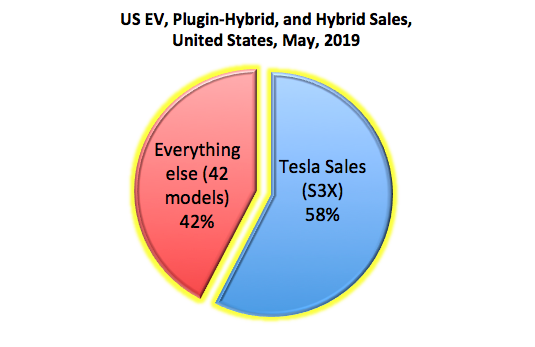



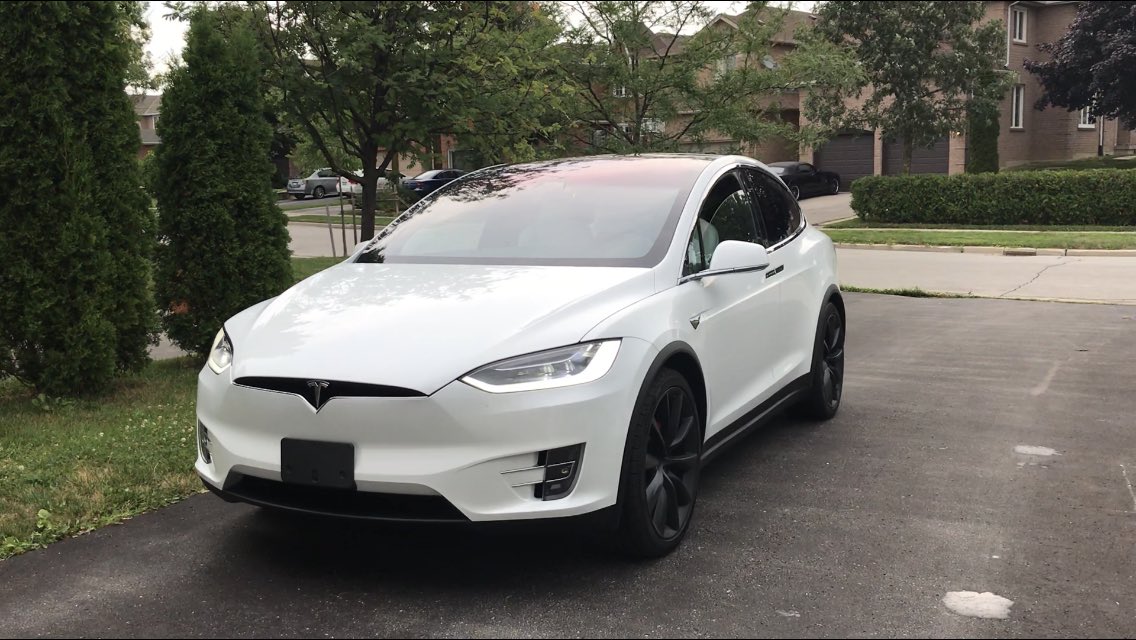
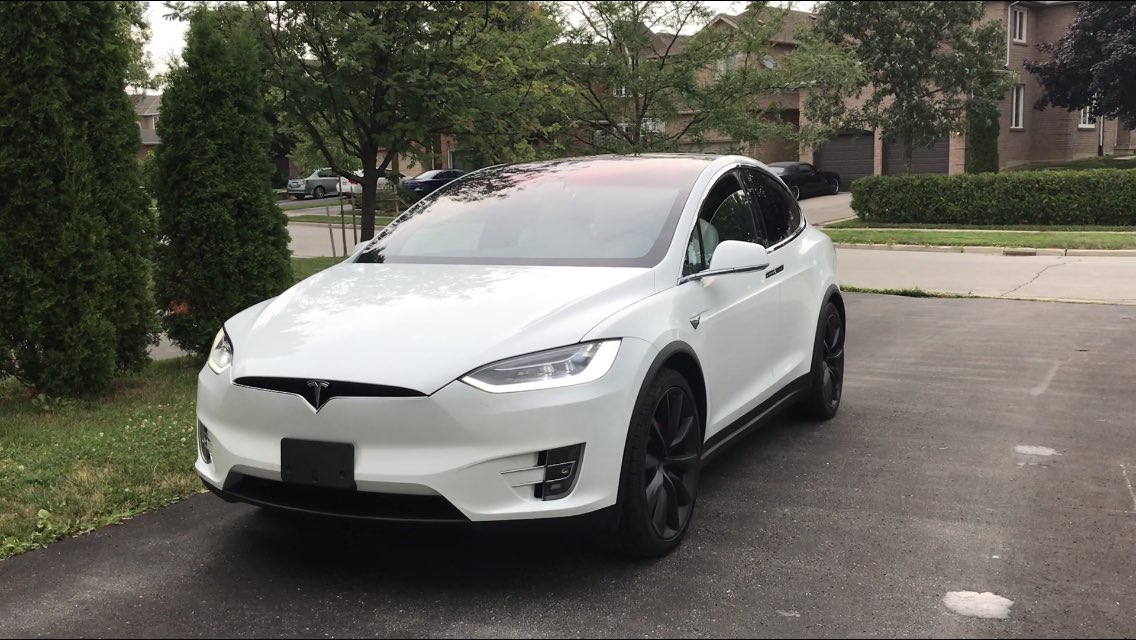

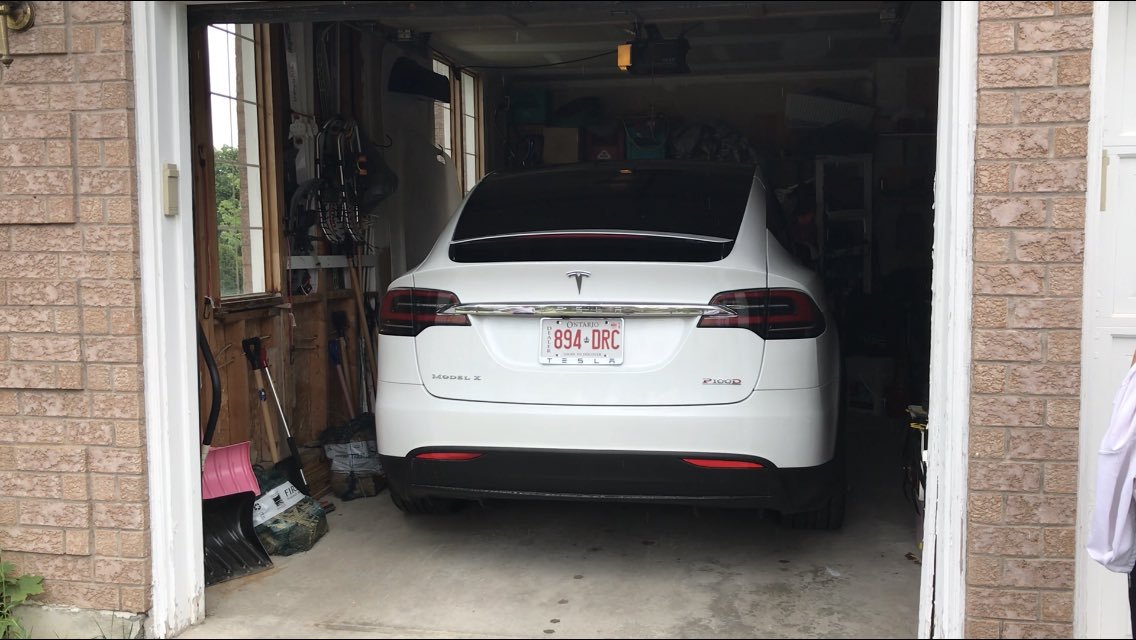
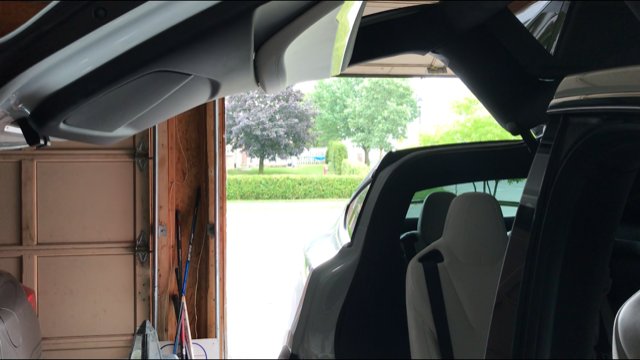

 RSS Feed
RSS Feed